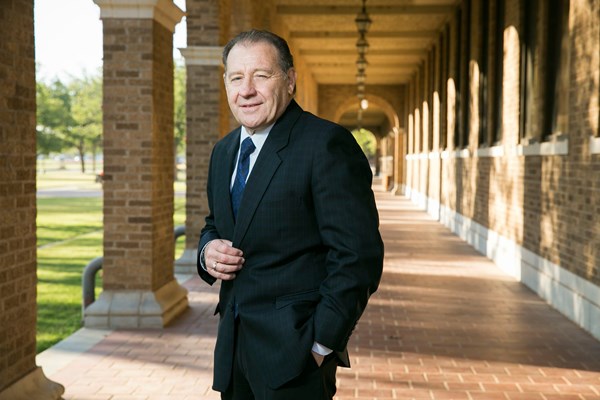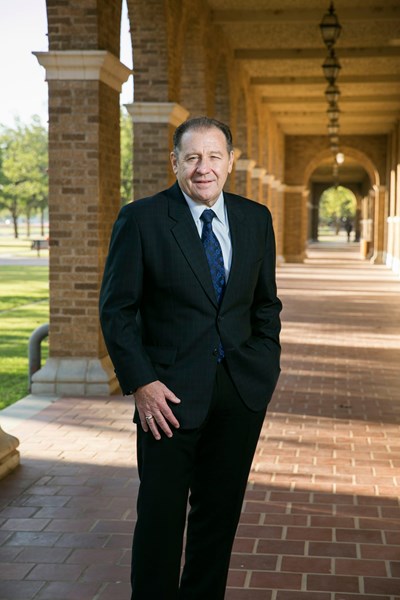LUBBOCK, Texas, Dec. 10, 2013 (GLOBE NEWSWIRE) -- Throughout his career, former astronaut Al Sacco Jr., has used his space flight experience as a means to motivate teachers and students to consider careers in science and engineering.
In his third year as dean of Texas Tech University's Whitacre College of Engineering, Sacco still is making sure those opportunities are available.
Under his leadership, the college is thriving. Enrollment is up, especially among minority students. Federal, state, and private research grants have increased by 18.5 percent, and three National Academy of Engineering members have been added to the faculty, bringing the total to four.
In just two years, the college has raised $22 million, primarily from private donations, for a new 42,000 square foot Petroleum Engineering Building that will usher in a new paradigm in petroleum engineering learning and education. The building will be completed this winter.
The Texas Tech University System recently reached its goal of raising $1 billion as a part of "Vision & Tradition: The Campaign for Texas Tech" a multi-year fundraising campaign. The Whitacre College of Engineering alone raised more than $232 million for this campaign, and $100 million was raised in Sacco's time at Texas Tech.
Add those achievements to a college whose programs consistently are ranked among the top 100 in the nation, according to U.S. News Media Group, and whose tuition is below the national average, and it is easy to see why students are finding the means and inspiration to pursue careers at Texas Tech — careers that could change the universe.
"Texas Tech University is in contention for the best and brightest," said Sacco, who in 1995 flew as the payload specialist on the Space Shuttle Columbia on shuttle mission STS-73. "And we have raised $17 million in scholarships over the last two-and-a-half years to be able to do just that. We are recruiting first-rate students and preparing graduates to excel in the global workspace."
The high level of preparation now includes a first for a state school engineering program. Starting with the fall 2013 freshman class, all engineering students will be required to have an international experience. These experiences can include, but are not limited to: studying abroad, an international internship, a research project abroad or a service project in another country. The goal is to prepare every student for a job market that is increasingly becoming more international and competitive.
Remaining Diverse
For Texas Tech to have a significant impact on the future development of the nation's workforce and economy, Science, Technology, Engineering and Math (STEM) fields require contributions from a diverse pool of engineers, including men and women from various cultures.
The Whitacre College of Engineering already is ranked in the top 10 by a Forbes.com survey of the "Best Colleges for Minorities in STEM," and continues to make recruiting diverse students a priority.
- In fall 2013, 21.6 percent percent of enrolled undergraduate engineering students at Texas Tech were Hispanic, compared to the national average of 11.4 percent. Three years ago, when Sacco took over, the Hispanic enrollment was at 14.8 percent.
- Total female enrollment rose from 12.9 percent in 2010 to 14.9 percent in 2013.
- Black students made up 6.2 percent of the college's enrollment, just more than the national average of 5.5 percent.
The college is far from satisfied and remains committed to developing strategies to recruit under-represented groups, enhancing their retention and seeing it through to graduation. Goals include a Hispanic population of 28 percent, and women at 32 percent.
New Facilities
To attract the best students and faculty from around the world, Sacco this past year oversaw the groundbreaking of facilities representing two of the fastest-growing industries.
The first is the new Scaled Wind Farm Technology facility (SWiFT), in partnership with the U.S. Department of Energy, Sandia, Vestas, and Group NIRE. The facility, which was commissioned July 9, will explore the full capability of wind turbines, critical to the future of the wind energy industry.
The second is the new Petroleum Engineering Research Building, a $22.8-million facility that will house 42,000 square feet of modern classroom and research space. Included in the state-of-the-art facility will be the Apache Upstream Research Center, with special focus on fracturing techniques and research, the Anadarko Unconventional Technology Center, and other new laboratories.
Through the integration of laboratories and classrooms, the new facility will allow for education that covers the entire spectrum of exploration and production, including business profitability analysis. The labs will offer students both a theoretical and practical education that compliments classroom material through hands-on applications.
"We are building a facility that will allow all of our petroleum engineering courses to have hands-on components," says Sacco. "The classrooms and the laboratories have been designed to be right next to one another. They get the theory in the classroom and walk next door and apply it. This will set the national benchmark for petroleum educational facilities."
The Faculty
Sacco also has recruited highly qualified faculty, which is dedicated to the quality education of its students and research activities.
Among them are four members of the prestigious National Academy of Engineering (NAE): Chau-Chyun Chen, Fazle Hussain, Danny Reible and Kishor Mehta. It marks the first time Texas Tech has had four NAE members on its faculty.
"I am extremely proud of the National Academy members we have added to the Texas Tech University faculty," Texas Tech President M. Duane Nellis said. "This is one of numerous examples of the outstanding progress being made at our university, and I look forward to their contributions to our already esteemed engineering program."
The Students
Requirements to enter the engineering program are comparable to the top universities in Texas, but students who do not meet the requirements may receive a second chance through Texas Tech's PreEngineering (PREN) Program.
"We give them the opportunity to come to Texas Tech, work really hard and prove themselves," Sacco said. "They may then apply to the engineering program after their first year."
With guidance from their academic advisor, PREN students follow the engineering course of study and participate in activities organized and promoted by the Whitacre College of Engineering. The process regularly leads students to the selection of best-fit minors, undergraduate research areas and potential graduate programs.
The college also takes great pride in its reputation for educating industry-ready engineers, coupled with a growing demand for graduates with international experience.
"Our focus remains on the students' educational experience; we are intentionally keeping our class sizes small. This fall, we only have five classes with more than 50 students," says Sacco. "In the coming semesters, all of our classes will have less than 50 students.
"From our efforts to attract the best students, to our recent additions to our faculty, combined with our new facilities and innovative programs, we are building the Whitacre College of Engineering into a national leader in engineering education and research."
Photos accompanying this release are available at:

